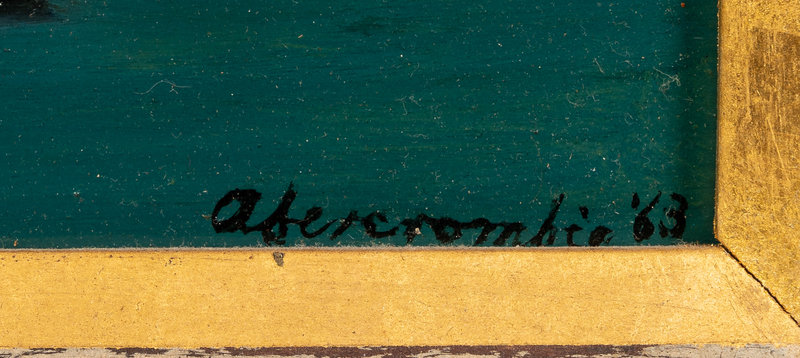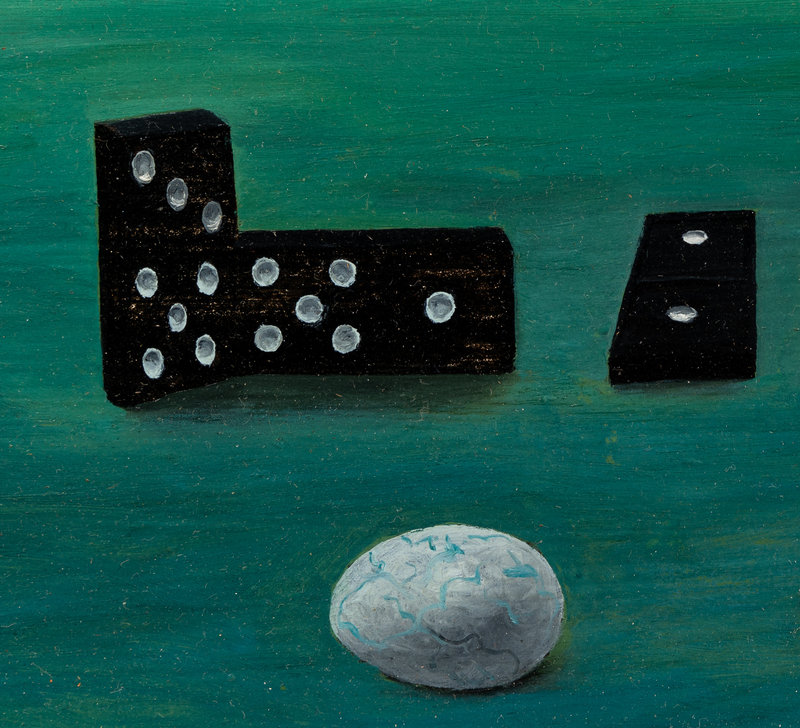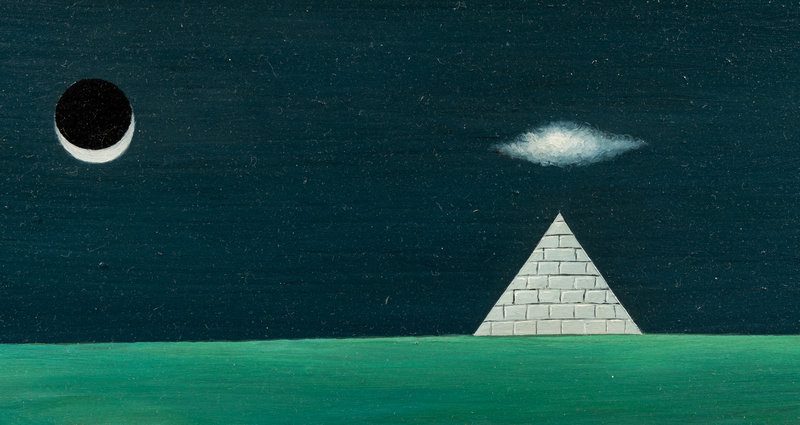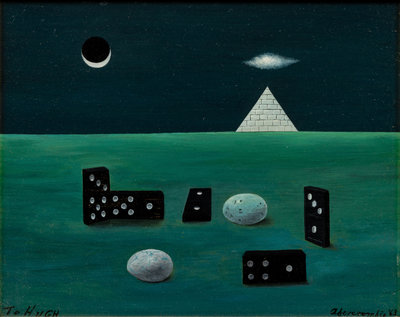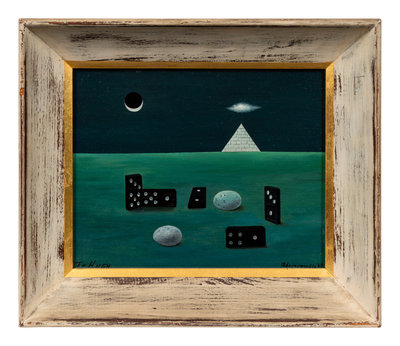Lot 30
We are grateful for the research conducted by Susan Weininger, Professor Emerita, Roosevelt University.
Provenance:
The Artist
Hugh Cameron, Benton Harbor, Michigan, gift from the Artist
Thence by descent to the present owner
Exhibited:
Chicago, Illinois, Hyde Park Art Center, Gertrude Abercrombie, A Retrospective Exhibition, January 28 - March 5, 1977, no. 81
Chicago, Illinois, State of Illinois Art Gallery, Gertrude Abercrombie, March 18 - May 17, 1991 (also traveled to Springfield, Illinois State Museum, July 28 - October 15, 1991), pp. 95 (as Untitled)
New York, New York, Karma, Gertrude Abercrombie, August 9 - September 23, 2018
Literature:
Robert Storr, Susan Weininger, Robert Cozzolino, Dinah Livingston, Studs Terkel, Gertrude Abercrombie, New York, 2018, pp. 444, illus.
Lot Essay:
Although Gertrude Abercrombie painted still lifes early in her career, her work in the 1930s and 1940s was dominated by portraits, landscapes, and interiors, with or without figures (almost exclusively self-portraits), replete with objects that had personal meaning. However, in the early 1950s, probably to generate necessary income after her divorce and remarriage in 1948, the artist began to do very small (1” x 1” or 1 ½”x 1 ½”) paintings that could be made into pins. These were primarily simple still life paintings, often of shells. At about this time, Abercrombie also began to create more complex and larger still life paintings, which she continued to produce until the end of her career. Unlike the earlier still lifes, which are complicated and painterly, these are characterized by minimal detail, almost undetectable brushstrokes, and clear, bright colors. They attest to the artist's evolving style and skills but retain the mastery of composition and witty approach to her subjects.
Birds Eggs and Dominoes with Pyramid, 1963, incorporates common objects, eggs and dominoes, that are often seen in Abercrombie’s work and have a personal significance to the artist. The depiction of a pyramid is more unusual, as it appears only a handful of times (see A Terribly Strange Tree, 1949, Western Illinois University Art Gallery, Macomb) and here in an austere landscape under an eclipsed moon. The artist’s love of games inspired the presence of the dominoes. The eggs have a personal resonance as well, and her numerous images of eggs, shells, and chicks emerging from eggs provides a clue to their appeal. Like the shells that are ubiquitous in her work, the egg is a kind of enclosure, a home of sorts, a subject the artist was drawn to all her life.
Beginning with the empty, closed rooms that appear early in her career, and the tents she painted in the 1940s and 1950s, Abercrombie had an abiding interest in spaces that served as a metaphor for her own feelings of isolation and insecurity. The pyramid is another enclosure with no escape; like those in built in ancient Egypt there was ostensibly no way to get in or out. It conveys the idea of an inescapable place, moreover one reserved for the dead. The pyramid and the eclipsed moon also suggest the possibility of a kind of paranormal activity, something Abercrombie’s belief in all kinds of magic would support.
The present painting, careful and finished, is composed in Abercrombie’s typically precise manner. The simple green ground and dark background, the meticulous arrangement of the black and white dominoes, and the diagonal path created by the eggs leading to the pyramid in the distance combine to create a balanced whole. The contrasting sharp triangle of the pyramid and the circular moon echo the curves and angles of the eggs and dominoes. This seemingly simple still life blends the prosaic with the magical, the everyday with the exotic, and at the same time conveys the artist’s own fears and insecurities to create an expression both personal and universal.


